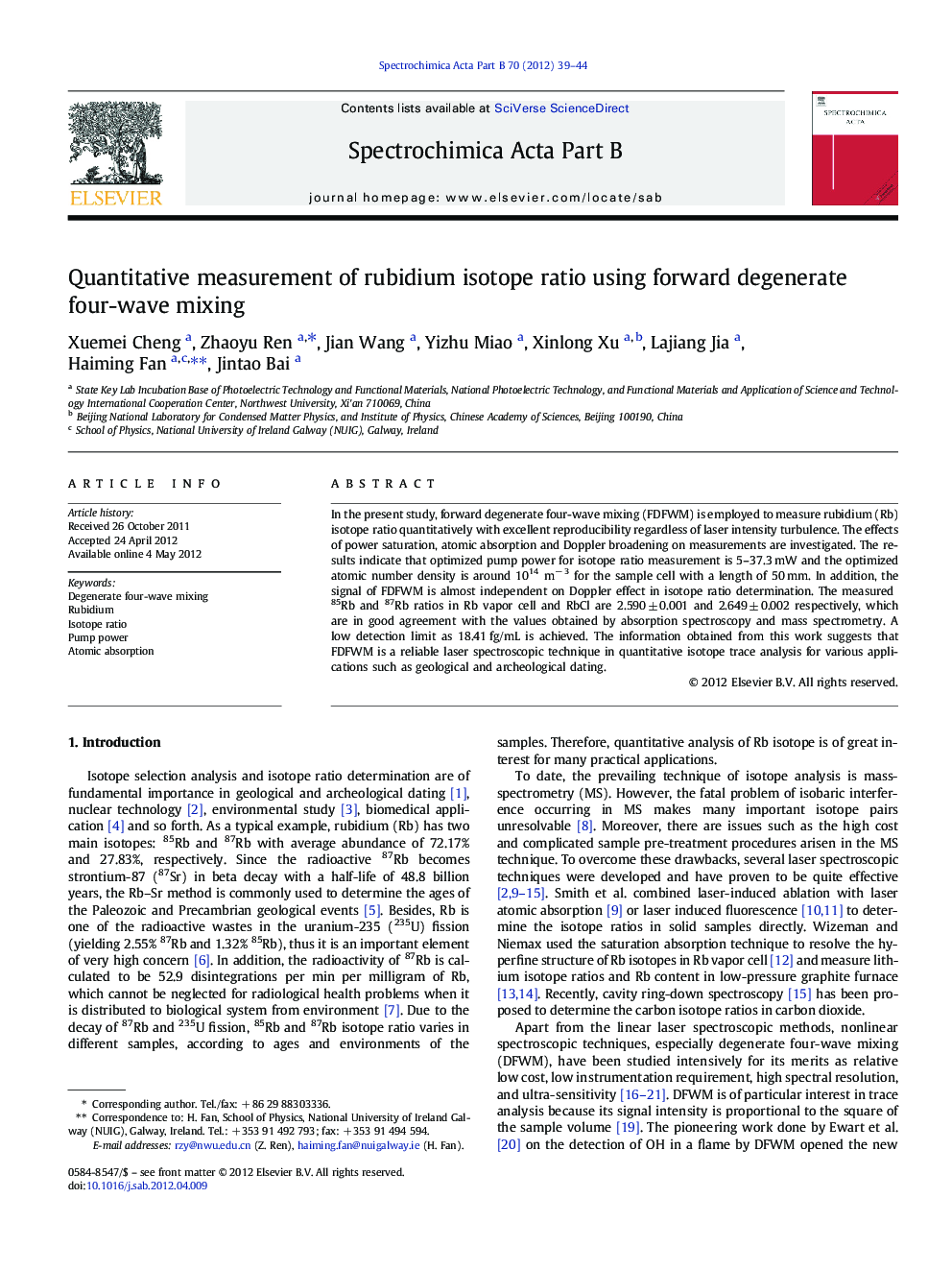| Article ID | Journal | Published Year | Pages | File Type |
|---|---|---|---|---|
| 1240444 | Spectrochimica Acta Part B: Atomic Spectroscopy | 2012 | 6 Pages |
In the present study, forward degenerate four-wave mixing (FDFWM) is employed to measure rubidium (Rb) isotope ratio quantitatively with excellent reproducibility regardless of laser intensity turbulence. The effects of power saturation, atomic absorption and Doppler broadening on measurements are investigated. The results indicate that optimized pump power for isotope ratio measurement is 5–37.3 mW and the optimized atomic number density is around 1014 m− 3 for the sample cell with a length of 50 mm. In addition, the signal of FDFWM is almost independent on Doppler effect in isotope ratio determination. The measured 85Rb and 87Rb ratios in Rb vapor cell and RbCl are 2.590 ± 0.001 and 2.649 ± 0.002 respectively, which are in good agreement with the values obtained by absorption spectroscopy and mass spectrometry. A low detection limit as 18.41 fg/mL is achieved. The information obtained from this work suggests that FDFWM is a reliable laser spectroscopic technique in quantitative isotope trace analysis for various applications such as geological and archeological dating.
► Rb isotope ratio was quantitatively determined with DFWM for the first time. ► Saturation effect and atomic absorption were studied to optimize the parameters. ► High resolution was realized in graphite furnace with high temperature of 2000 °C. ► Detection limit as low as 18.41 fg/mL was achieved.
